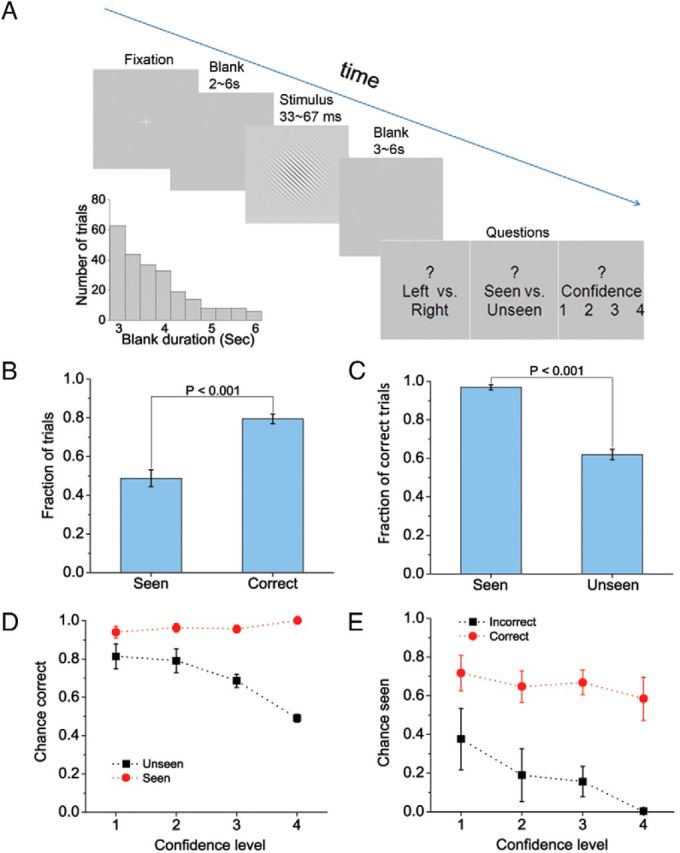Figure 1.

Task paradigm and behavioral results. A, In each trial, a Gabor patch with two possible orientations (45° or 135°) is shown for a brief duration, sandwiched between two blank screens. The duration distribution of the second blank screen from an example subject is shown in the inset. At the end of each trial, the subject is prompted to answer three sequential questions at their own pace. B, The total fractions of trials in which the subjects reported seeing the stimulus (seen answers to the second question) or correctly discriminated the orientation of the Gabor patch (correct answers to the first question). C, The fraction of correct trials (based on orientation discrimination) in seen and unseen trials, respectively. D, Objective performance (based on orientation discrimination) conditioned on subjective awareness (seen vs unseen) and confidence level. E, Subjective awareness conditioned on objective performance (correct vs incorrect) and confidence level. B–E, Results are averaged across subjects. Error bars indicate SEM across subjects.
